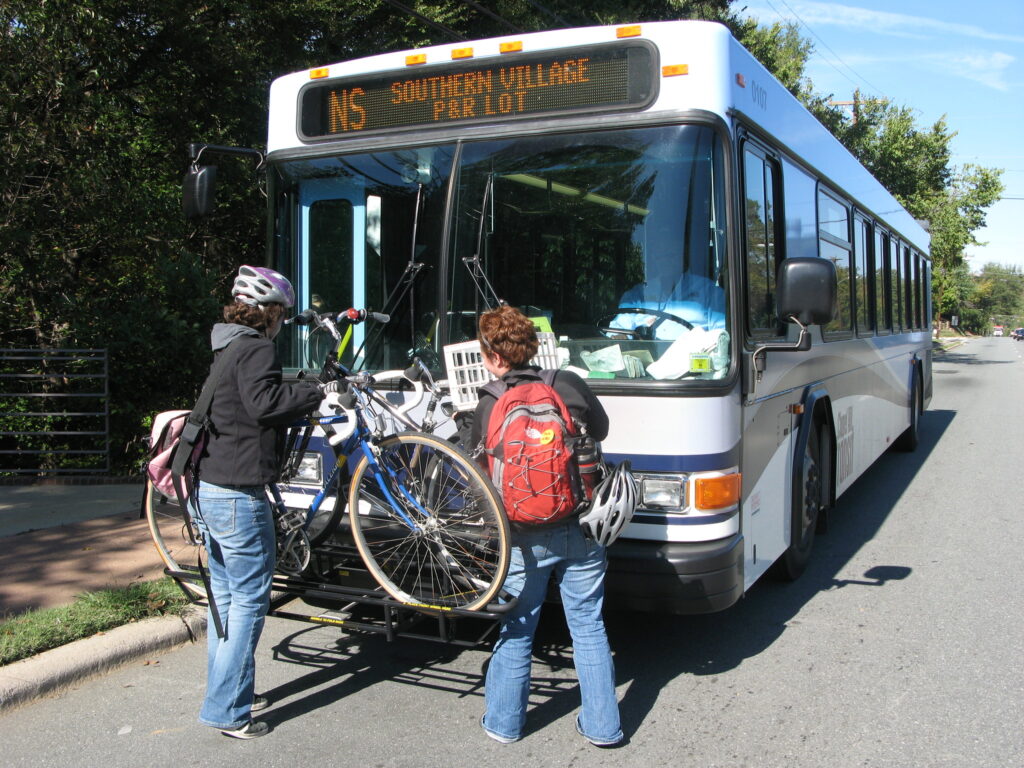Navigating the city with your two-wheeled companion just got easier! “How to put bike on bus” is your go-to guide for seamlessly integrating cycling with public transport. Whether you’re pedaling to work or exploring urban trails, sometimes a bus ride is part of the journey.
This essential skill allows cyclists to extend their range, overcome challenging weather, or simply take a break without interrupting their travel plans. With our step-by-step instructions, you’ll master the art of transporting your bicycle on a bus, ensuring a smooth transition from pedal to seat and back again.
Stay tuned for the full scoop on turning your bike-bus combo into the ultimate urban adventure.
Benefits of Using a Bike on Bus
Integrating cycling with bus travel offers a trifecta of advantages that cater to the eco-conscious commuter. This synergy not only reduces carbon footprints by minimizing reliance on personal vehicles but also enhances accessibility to bus networks, particularly for those residing in areas not directly served by public transit.
The combination fosters a seamless transition between modes of transport, ensuring a smoother and faster commute. Economically, it’s a win-win; individuals save on fuel and parking costs, while society benefits from reduced traffic congestion and pollution.
Moreover, this approach promotes a healthier lifestyle through physical activity, potentially decreasing healthcare expenses. Overall, the fusion of biking and bus usage presents a sustainable, efficient, and cost-effective solution for daily transportation needs, aligning with contemporary environmental goals and urban mobility strategies.
Research Your Local Bus System
Before you merge pedal power with public transit, it’s crucial to research your local bus system. Check if buses are equipped with bicycle racks or have specific areas allocated for bicycles. Each system has its own set of rules and guidelines for transporting bikes.
Some may require a special permit, have restrictions on the number of bikes allowed per bus, or only permit bikes during off-peak hours. It is important to know these details to avoid any hassles.
It’s also wise to familiarize yourself with the loading and unloading process to keep your commute smooth and swift. This preparation not only saves time but also helps in planning an efficient and stress-free journey.
How to Put a Bike on a Bus Rack? First Prepare Your Bike
Preparing your bicycle for a bus trip is essential for a hassle-free ride. Start by conducting a quick check to ensure all parts are functioning correctly; brakes should respond sharply, tires must be fully inflated, and the chain should move smoothly.
Opting for a bike rack can greatly simplify the process of loading and unloading your bicycle onto the bus. If available, a folding bicycle offers even more convenience, as it can be compacted to a manageable size and usually fits in designated spaces without trouble.
It’s also important to secure any loose items on your bike, such as bags or accessories, to prevent them from swinging or falling off during transport. Use straps or bungee cords to fasten these items tightly to the bicycle frame.
By taking these steps, you ensure your bicycle is ready for the journey ahead, allowing you to integrate cycling with public transportation effectively.
How to Put Bike on Bus?
When you’re planning to take your bicycle on a bus, the first step is to signal the driver as you approach. Make eye contact or give a friendly wave to ensure they’re aware of your plan. Once acknowledged, wait for the bus to come to a complete stop and the driver to indicate it’s safe to proceed.
Next, follow the driver’s guidance to place your bicycle on the provided rack or within the allocated space. It’s crucial to fasten your bike securely to prevent any movement during the journey; use the available straps or bars to lock the wheels and frame in place.
If there’s a fee for bringing a bicycle on board, be prepared to pay it according to the transit authority’s policy, which may require exact change or a special ticket. Some systems might have a tag or permit that you need to display on your bicycle.
Always keep an eye on your bicycle through the journey to ensure it remains secure. Once you reach your destination, inform the driver before you disembark to retrieve your bike. Carefully remove it from the rack or space, making sure not to obstruct other passengers or traffic.
By following these steps, you can smoothly integrate cycling with public transportation, expanding your travel options and enjoying a more flexible commute.
How to Secure Your Bike on Bus?
After learning how to put a bike on the bus, you should know how to secure your bicycle to ensure the safety of your ride and fellow passengers. If the bus is equipped with a front bike rack, gently lift your bicycle onto the rack, positioning the wheels in the slots provided.
Most racks have a spring-loaded arm that can be pulled out and placed over the front tire to hold the bicycle firmly in place. Ensure that the arm is snug against the tire, preventing any wobbling or shifting.
In the absence of an exterior rack, bring your bicycle inside the bus and place it in the designated area, usually near the front or rear exits. It’s important to lock the brakes; some bikes have a built-in feature or you can use a Velcro strap to keep the brake lever pressed.
Additionally, use a bungee cord or a bike lock to secure the frame to a fixed part of the bus, avoiding any contact with moving parts or blocking aisles and exits. This method not only keeps your bicycle stationary but also deters potential theft.
Remember to monitor your bicycle during stops to ensure it remains secure. By following these steps, you can confidently transport your bicycle on public transit, knowing it’s safely stowed for the duration of your trip.
How to Unload Your Bike from Bus?
Unloading your bicycle from the bus upon arrival at your destination requires attentiveness and courtesy. As your stop approaches, prepare by gathering your belongings and staying alert. Notify the bus driver a few minutes in advance that you will be retrieving your bike, which allows them to provide any specific instructions or assistance.
Once the bus halts, exit through the front door to access the bike rack. Release any securing mechanisms, such as the spring-loaded arm over the front tire or straps holding the frame, with care to avoid damage to your bicycle or the bus.
Gently lift your bicycle off the rack, being mindful of other passengers and vehicles. It’s essential to maintain a clear path for others disembarking the bus and to ensure your actions don’t disrupt traffic.
After successfully removing your bike, step aside to a safe area to inspect it for security and functionality before proceeding on your journey. It’s a good practice to acknowledge the bus driver with a nod or a simple ‘thank you’ as a gesture of appreciation for their cooperation.
Additionally, a polite acknowledgment to fellow passengers for their patience can foster a positive atmosphere. By following these steps, you contribute to a smooth and efficient process for everyone involved, making the public transit experience better for cyclists and non-cyclists alike.
Check Local Regulations and Policies
Navigating the intricacies of local transportation policies is essential for cyclists who rely on buses for part of their commute. It’s imperative to investigate the particular regulations governing bicycle transport on public buses within your locality.
This research will unveil any stipulations, such as peak-hour restrictions or limitations on the number of bikes allowed per bus. Additionally, it’s crucial to be aware of any fees that may apply when bringing a bicycle aboard.
Some regions may necessitate special permits or have specific requirements like removable front wheels. By staying informed about these local directives, cyclists can ensure compliance and a smoother journey.
Adhering to these guidelines not only facilitates a hassle-free ride but also demonstrates respect for fellow commuters and transit authorities.
Conclusion
Putting your bicycle on the bus can significantly enhance your daily commute, offering a blend of convenience and environmental benefits. This guide about how to put bike on bus has outlined the simple steps on how to load your bike on the bus, ensuring a smooth transition between cycling and bus travel.
By familiarizing yourself with local regulations and preparing for your journey, you can confidently integrate biking with public transportation.
We encourage you to consider this eco-friendly option for your next commute, contributing to a greener community while enjoying the health benefits of cycling. Embrace this sustainable travel method and experience the best of both worlds.
FAQs
Lift your bike, place the wheels into the slots, and secure it using the available locking mechanism.
No, bikes can’t be locked on bus racks for safety.
Many trains have designated areas for bikes; check the train service’s policy before traveling.



